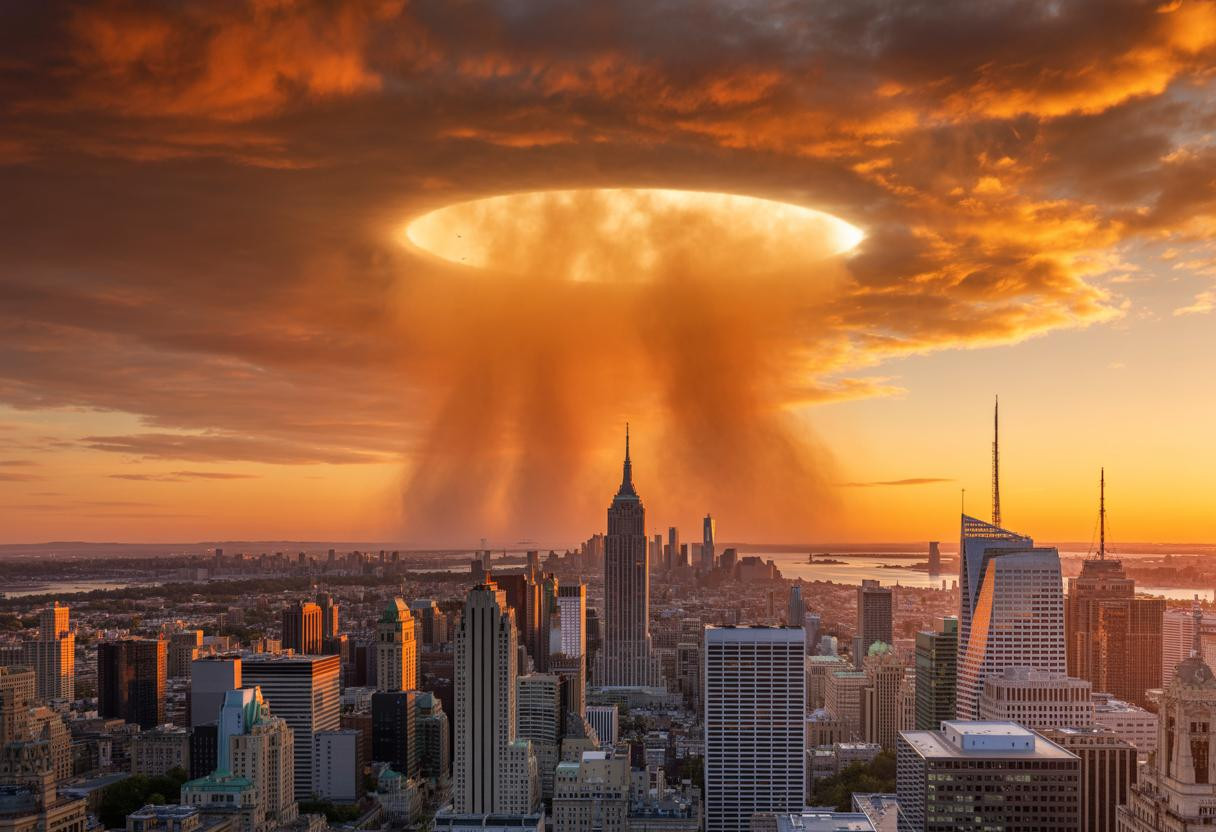A massive heat dome is unleashing dangerous temperatures up to 35°F above normal across 12 U.S. states this week, creating the season’s first major heat emergency. From California to the East Coast, this atmospheric prison of superheated air is trapping millions of Americans in conditions that meteorologists are calling “exceptionally hazardous” – with heat indices soaring to 120°F in some regions.
The invisible wall trapping America under extreme heat
This heat dome operates like a massive atmospheric lid, formed by a stubborn high-pressure ridge that blocks cooling air masses from moving through. Unlike typical summer heat waves that last 2-3 days, this system shows unprecedented persistence, anchored by displaced jet stream patterns that meteorologists say could extend dangerous conditions well into July.
The affected regions span from Nebraska and Illinois in the Midwest to Washington D.C. and Boston on the East Coast. What makes this event particularly dangerous is the combination of extreme heat with suffocating humidity, creating “feels-like” temperatures that can overwhelm the human body’s cooling mechanisms within hours.
“We’re seeing temperature anomalies that represent a significant departure from historical June patterns,” according to National Weather Service analysis. The persistence of these conditions is what transforms a typical heat wave into a life-threatening weather emergency.
Three critical factors making this heat dome uniquely dangerous
Nighttime temperatures refuse to drop
Perhaps the most alarming aspect is that overnight lows are staying in the mid-70s°F, providing virtually no relief for human bodies to recover from daytime heat stress. This continuous thermal load prevents the natural cooling cycle that typically allows people to recover during evening hours.
Emergency medicine specialists warn that sustained heat exposure without nighttime recovery dramatically increases risks of heat exhaustion and heat stroke, particularly among health risks that compound during extreme weather events for vulnerable populations.
Humidity creates deadly heat index multiplier
Moisture streaming from the Gulf of Mexico and Atlantic Ocean is pushing heat indices 20°F higher than actual temperatures. When air temperatures hit 95°F with high humidity, the heat index can reach 115°F – entering the danger zone where heat-related illness becomes likely within 30 minutes of exposure.
This combination prevents human perspiration from evaporating effectively, essentially disabling the body’s primary cooling mechanism. The result is that even relatively fit individuals can experience rapid overheating.
Geographic scope creates cascading infrastructure stress
Unlike localized heat events, this dome’s massive footprint across 12 states means regional power grids face simultaneous peak demand. Energy analysts project daily economic losses exceeding $1 billion as agricultural operations, construction projects, and transportation systems all face disruptions simultaneously.
Rural communities face particular challenges, as rural community resilience challenges become magnified when cooling infrastructure is limited and emergency services are stretched thin.
Essential survival strategies during extreme heat exposure
The counterintuitive reality is that staying indoors during peak hours isn’t always enough. Many homes without adequate air conditioning can become dangerous heat traps, with indoor temperatures climbing to hazardous levels even with fans running.
Key protective actions include seeking air-conditioned public spaces during midday hours, avoiding dangerous health decisions during heat stress like excessive supplement intake that can impair temperature regulation, and recognizing early warning signs of heat illness.
Immediate protection steps for the next 72 hours
Create cooling micro-environments
Use cold, wet towels on pulse points – wrists, neck, and ankles – to rapidly cool core body temperature. This technique can reduce body temperature more effectively than general cooling methods.
Time outdoor activities strategically
Even brief outdoor exposure should be limited to early morning hours before 10 AM. Avoid summer heat safety mistakes like prolonged outdoor cooking or activities during peak heat periods.
Monitor hydration beyond thirst
Drink fluids before feeling thirsty and monitor urine color as a hydration indicator. Dark yellow urine signals dangerous dehydration levels that require immediate attention.
What this extreme event reveals about our climate future
This heat dome represents more than a weather event – it’s a preview of how persistent atmospheric patterns are reshaping American summers. The combination of geographic scope, duration, and intensity suggests we’re entering a new era where traditional heat wave preparation strategies may prove inadequate.
The next 48 hours will be critical for determining whether this system maintains its grip or begins to weaken, but the broader message is clear: extreme heat preparedness is now an essential life skill for millions of Americans.
